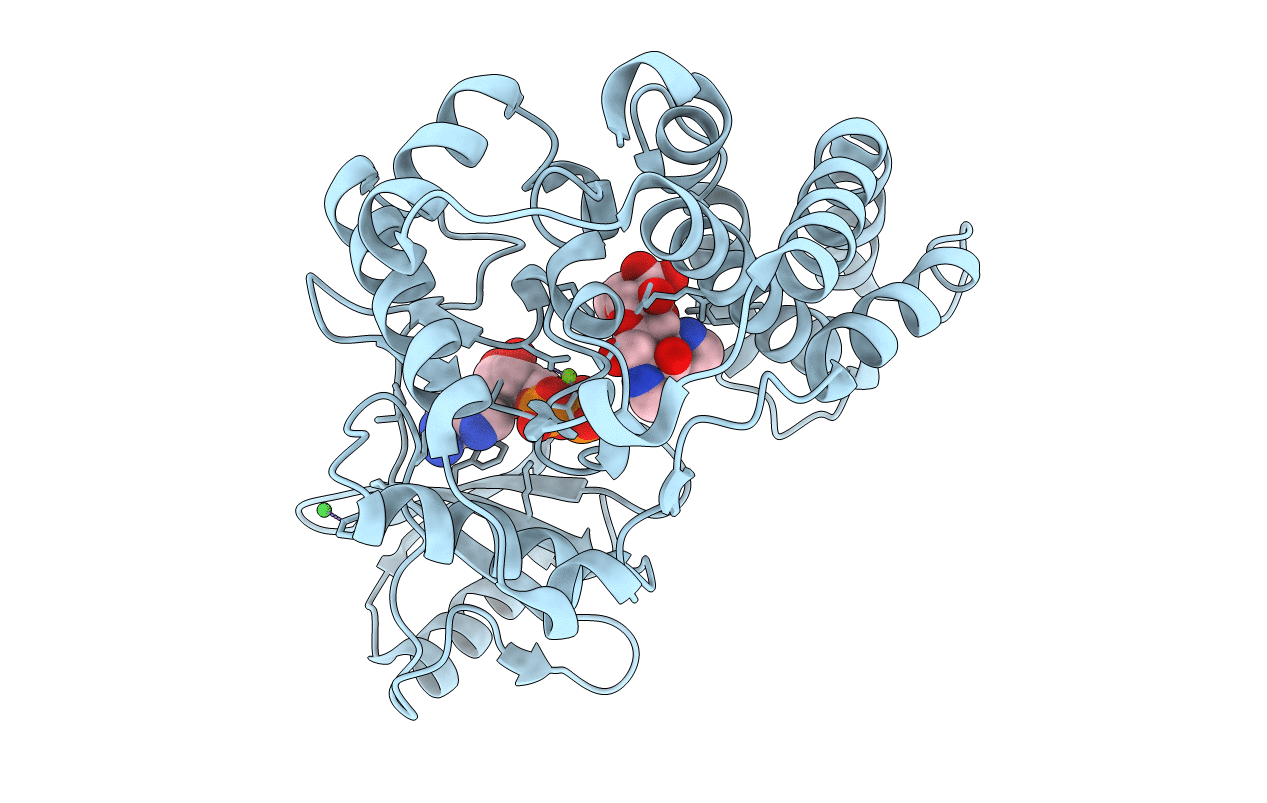
Deposition Date
2009-06-25
Release Date
2010-01-19
Last Version Date
2024-04-03
Entry Detail
PDB ID:
3I0O
Keywords:
Title:
Crystal Structure of Spectinomycin Phosphotransferase, APH(9)-Ia, in complex with ADP and Spectinomcyin
Biological Source:
Source Organism:
Legionella pneumophila serogroup 1 (Taxon ID: 66976)
Host Organism:
Method Details:
Experimental Method:
Resolution:
2.40 Å
R-Value Free:
0.27
R-Value Work:
0.22
R-Value Observed:
0.22
Space Group:
P 31 2 1


